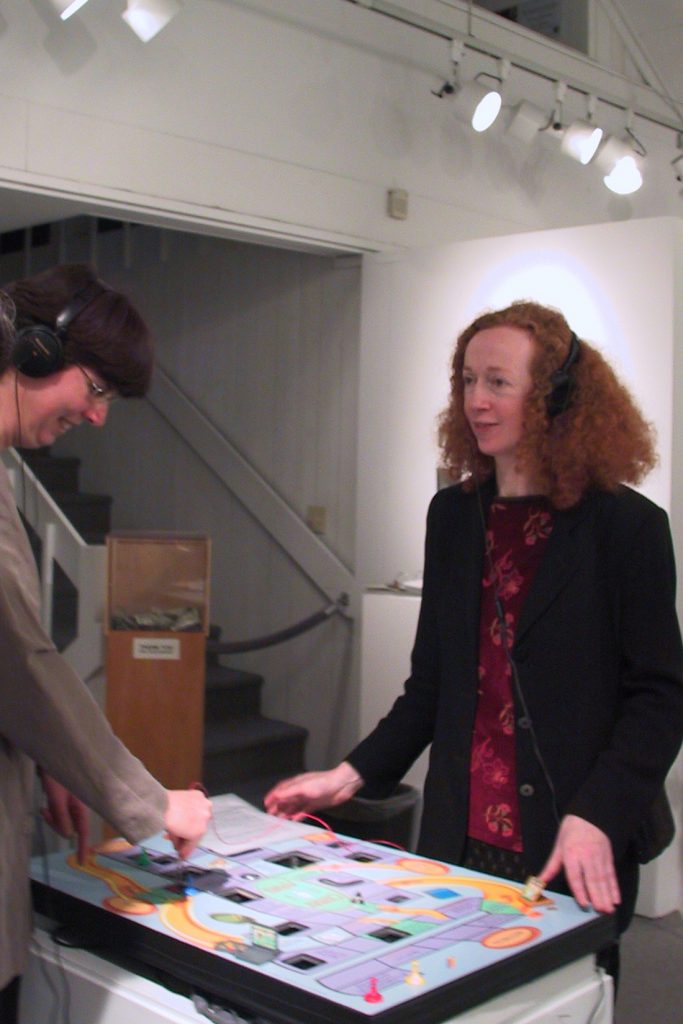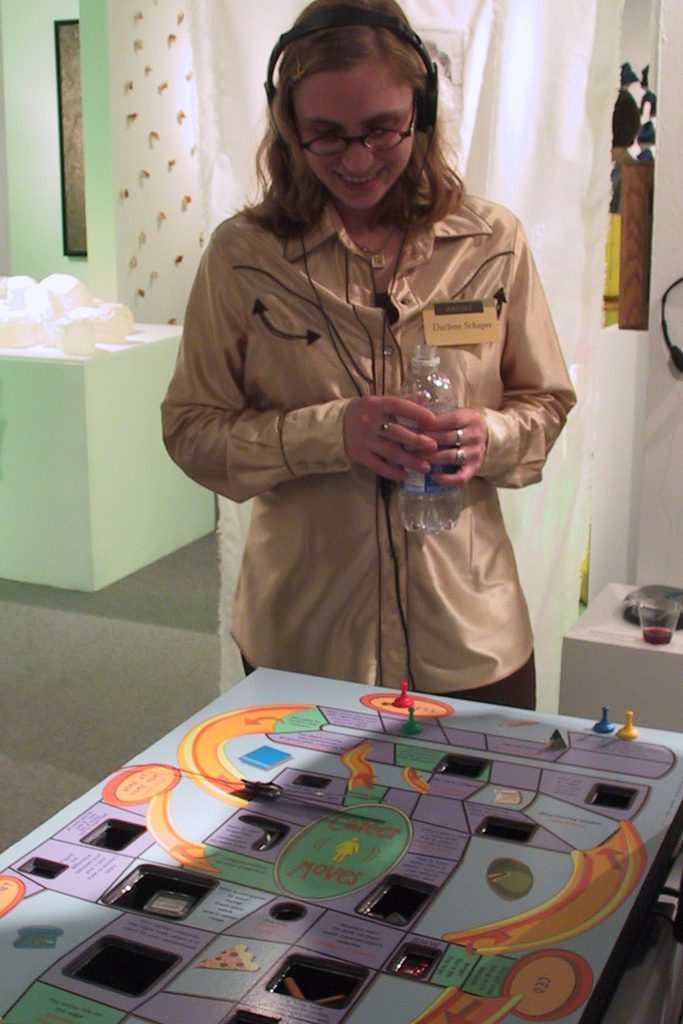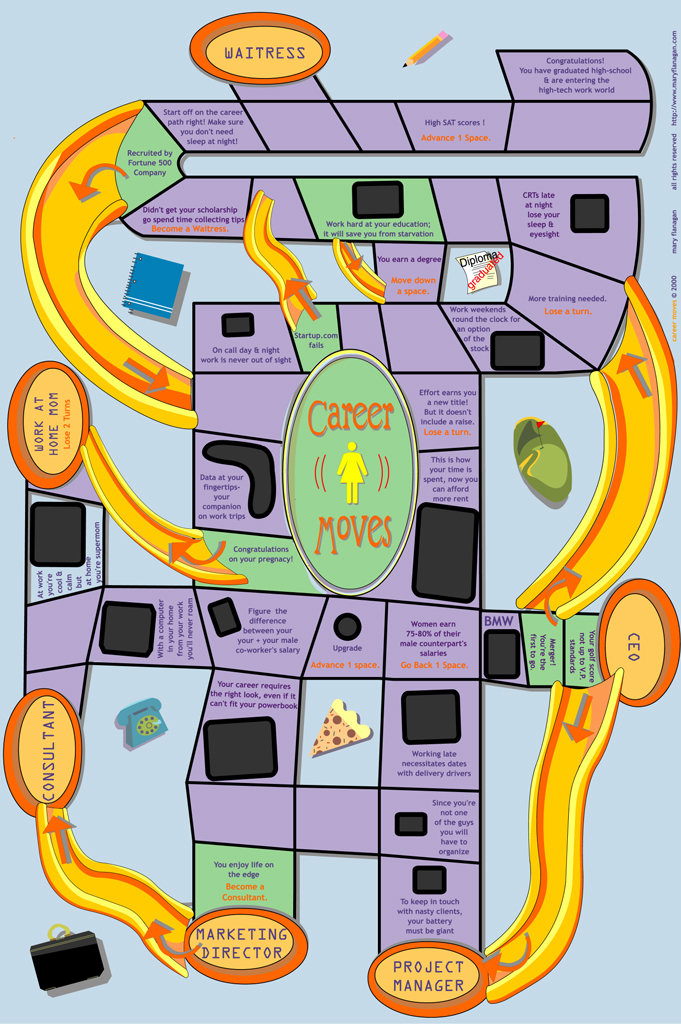




[career moves]
Board game with sound
20″ x 30″
50.8cm x 76.2cm
2000
Career Moves explores the contradictory world of women in corporate America througan interactive, computer controlled board game.
Work is a troubling condition internationally for all women. Women represent 50 per cent of the world adult population and one-third of the official labour force, but they perform nearly two-thirds of all work hours, receive one-tenth of the world income and own less than 1 per cent of the world’s property. Much women’s work is not officially recognized and does not entitle them to any remuneration, respect or rights usually associated with work (UNESCO).
The game itself represents several aspects of women and work under a variety of conditions, from menial jobs to corporate spaces. Many plastic items are embedded into the game board, representin accoutrements of “success.” Players typically take turns moving their game pieces around the board using the die. Upon landing on a space occupied with an object, players use tongs to retrieve the object. If the player falters or touches the side of the board with the tongs, he or she hears sampled voice sources taken from the career coaching and self-help industry directed at women, groups feeding off of social change by offering patronizing and constrictive advice to women caught in flux. The sampled dialogue presents a tangled web of contradictory statements about women, work, and agency.
The communal aspect of playing the game is intended to be part of the work: because the game appears at first look to be a commercial-style game, players begin in the spot on the board accordingly marked. This commercial style is intended as a critique of the historical sequence to which the popular board game belongs: many games have traditionally supported social “norms,” including heterosexuality, consumerism, and especially non-liberatory positions for women. However, as players progress down the board, it becomes clear that it is they themselves who are determining the rules of the game, and the collective and individual goals become apparent. This not only turns the collective experience and memory of such “family” style activities around, but turns the game experience into a collaborative rewriting of such conventions by calling into question the very motivation behind such goals.
Collective creation, to Levi-Strauss, involves forming commonly understood rule-goverened semantic systems to make objects, especially art objects, accessible to the community. When players begin to define and defend the game as they play it, a dialogue opens about consumption, work, and the political and economic machinery behind the production of a relatively innocent-looking pasttime. Thus the work is best seen in settings, where groups can take turns experiencing and creating their own semantic system.
Physical specifications:
Gameboard is 20″x 30″, controlled by a pc laptop
Game kit includes: two sets of headphones, die, player pieces, corporate objects for removal
Game sits on table, provided, or within the site
Exhibitions
- Northwest Documenta, Pacific NW Contemporary Art, Salem, Oregon, 2002
- Digital Arts & Culture Conference, Bergen, Norway, 2000